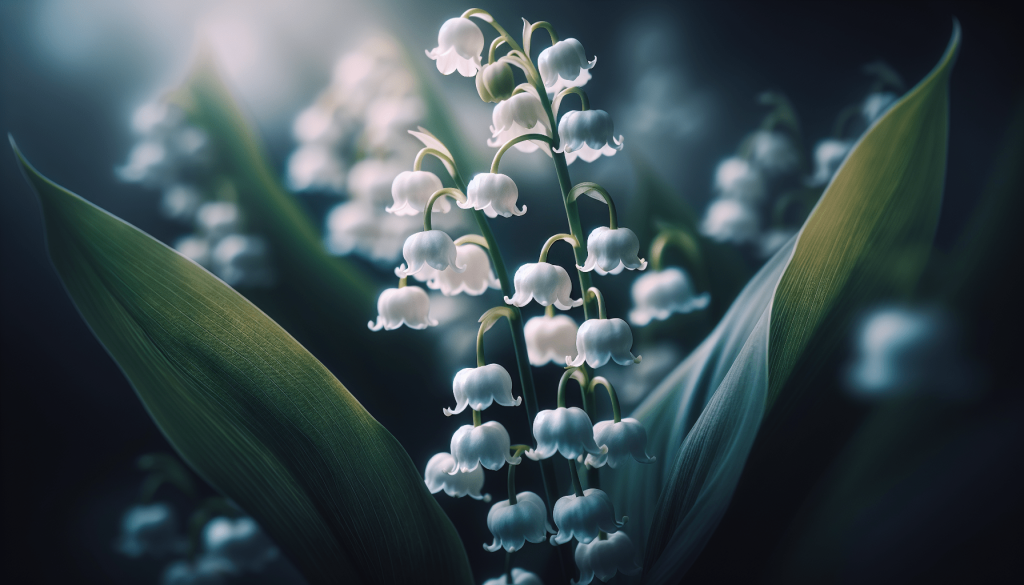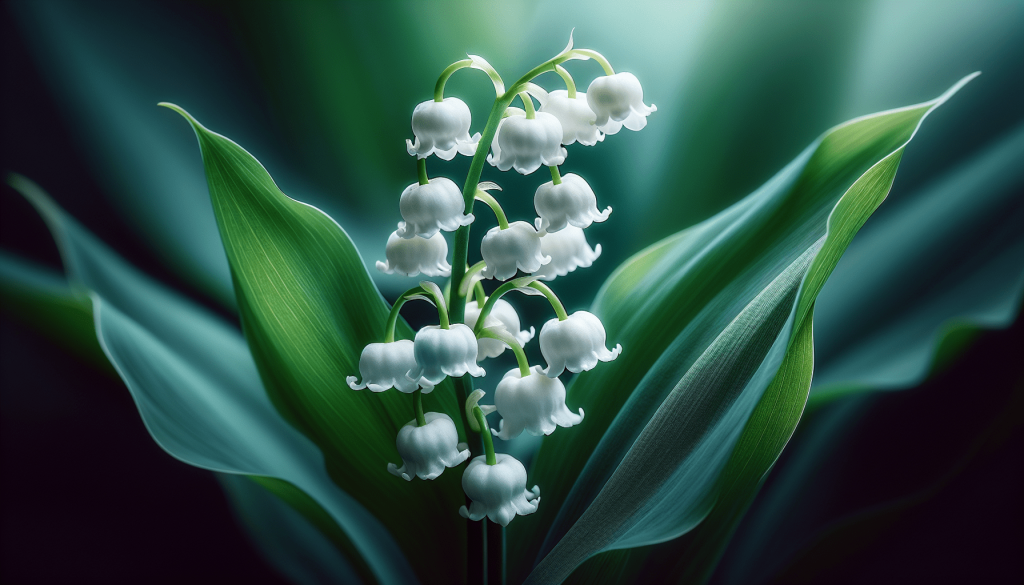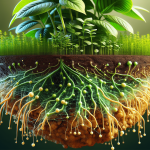This post may contain affiliate links. As an Amazon Associate, we may earn commissions from qualifying purchases.
Being Careful Of The Lily Of The Valley (Convallaria Majalis) sheds light on the delicate yet treacherous beauty of this common UK plant. Nestled in the lush temperate climates, the lily of the valley thrives, blanketing forest floors and gardens with its charming bell-shaped flowers. However, beneath its innocent appearance lies a potent toxicity that can pose significant health risks to humans and animals. This article explores the characteristics of the lily of the valley, its preferred habitats, and essential precautions to take in order to safely appreciate this plant without falling victim to its hidden perils. Have you ever strolled through a garden or park, admiring the variety of plants, and wondered if any of them posed a hidden danger? It’s a question worth considering, especially if you come across the elegantly charming yet potentially harmful Lily of the Valley.
Being Careful Of The Lily Of The Valley (Convallaria Majalis)
Lily of the Valley, or Convallaria majalis, is a plant that many people admire for its fragrant, bell-shaped flowers and lush greenery. However, despite its beauty, it carries a dark secret. This plant is highly toxic, and it’s crucial to be aware of the risks it poses, especially if you live in or visit the United Kingdom, where it’s commonly found.
The Enchanting Appearance of Lily of the Valley
Convallaria majalis stands out with its delicate and beautiful appearance. The plant typically has a narrow stem adorned with small, white, bell-shaped flowers. Each floral bell seemingly whispers a promise of sweet fragrance, which is actually one of its main attractions.
Characteristics of the Plant
The Lily of the Valley is a rhizomatous perennial, meaning it survives through underground stems, called rhizomes, which spread and produce new shoots. Here’s a quick rundown of its key features:
| Feature | Description |
|---|---|
| Flowers | Small, white, bell-shaped, sweetly scented |
| Leaves | Lance-shaped, glossy green, usually two to three per stem |
| Height | Typically between 15 to 30 cm (6 to 12 inches) |
| Bloom Time | May and June |
| Fruit | Small orange-red berries produced after flowering |
While the blooming flowers are an alluring sight, the entire plant, from the flowers to the leaves and roots, contains harmful toxins.
Typical Habitats
In the UK, Lily of the Valley thrives in various habitats. It prefers shaded areas with moist, well-drained soil. You’re most likely to encounter this plant in:
| Location | Description |
|---|---|
| Woodlands | Among the undergrowth, where shade is ample |
| Gardens | Often cultivated for ornamental purposes |
| Hedgerows | Commonly found in the thriving underbrush |
If you enjoy outdoor activities such as hiking or gardening, you may inadvertently come into contact with this plant.
Toxicity and Symptoms
The primary concern with Lily of the Valley is its toxicity. All parts of the plant contain cardiac glycosides, which can have significant effects on the heart if ingested.
Potential Risks to Humans
Exposure to Lily of the Valley can lead to various health issues. Here’s a breakdown of possible symptoms and their severity:
| Method of Contact | Symptoms |
|---|---|
| Ingestion | Nausea, vomiting, diarrhea, abdominal pain, confusion, dizziness, irregular heartbeats |
| Skin Contact | Slight irritation, though the primary risk comes from ingestion |
The cardiac glycosides interfere with the heart’s rhythm, potentially leading to severe complications, and in extreme cases, could be fatal.
Risks to Pets
Pets, especially dogs and cats, are also at risk if they consume parts of the plant. Symptoms in animals mirror those in humans:
| Method of Contact | Symptoms |
|---|---|
| Ingestion by Pets | Excessive drooling, vomiting, diarrhea, lethargy, changes in heart rate, potentially fatal |
If you suspect that a pet or human has ingested any part of this plant, it’s critical to seek medical or veterinary attention immediately.

Precautions in Handling
Understanding the risks associated with the Lily of the Valley is the first step in ensuring safety. Here are some practical precautions you can take:
Proper Identification
Learn to identify Convallaria majalis accurately. Often, it’s mistaken for similar-looking safe plants such as wild garlic, which can lead to accidental ingestion:
| Lily of the Valley vs. Wild Garlic | Characteristics |
|---|---|
| Lily of the Valley | White, bell-shaped flowers, no garlic smell when crushed |
| Wild Garlic (Allium ursinum) | Star-shaped white flowers, distinct garlic smell when crushed |
Safety Measures in Gardens
If you choose to cultivate Lily of the Valley in your garden, consider these safety measures:
- Plant Location: Choose areas less accessible to children and pets.
- Labeling: Clearly label the plant to avoid accidental ingestion.
- Gloves: Wear gloves when handling the plant to minimize skin contact.
- Education: Inform family members and visitors about the plant’s toxicity.
Emergency Response
Have a plan in place for potential poisoning. Keep contact information for local poison control centers or veterinary services readily available.
Environmental Role and Benefits
Interestingly, despite its toxic nature, the Lily of the Valley holds a valuable place in ecology and culture.
Ecological Benefits
In nature, Convallaria majalis contributes to:
| Benefit | Role |
|---|---|
| Biodiversity | Provides habitat and nectar for pollinators like bees |
| Soil Health | Helps prevent soil erosion with its extensive root system |
Cultural Significance
Culturally, the Lily of the Valley is often associated with purity, humility, and a return of happiness. It’s featured in various traditions, such as May Day in France, where it’s given as a symbol of good luck.
Medicinal Uses
Historically, extracts from the plant have been used in traditional medicine despite its toxicity. Always consult a professional before considering any traditional medical use due to the high risks involved.

Dealing with Accidental Encounters
Even with all precautions in place, accidents can happen. Here’s what to do if you or someone else encounters the plant accidentally:
Ingestion
- Do Not Induce Vomiting: Without professional guidance, do not try to induce vomiting.
- Seek Immediate Help: Contact a healthcare provider, poison control, or emergency services right away.
Skin Contact
- Rinse Thoroughly: Wash the affected area with water and soap immediately.
- Monitor for Symptoms: Keep an eye out for any irritation or unusual symptoms.
Pet Exposure
- Veterinary Assistance: If a pet has ingested the plant, seek veterinary assistance immediately. Time is a critical factor.
Final Thoughts: Finding a Balance
The presence of toxic plants in our environments serves as a reminder of nature’s dual nature – beautiful yet sometimes hazardous. Contrary to what you might think, this doesn’t mean you need to strip your garden of every lily of the valley.
Respecting Nature
It’s about respect and awareness. By understanding the characteristics and potential dangers of plants like the Lily of the Valley, you can appreciate their beauty while safeguarding your health and that of your loved ones.
Education and Awareness
Spreading knowledge about these plants goes a long way in preventing mishaps. Whether it’s through conversations at home, educational programs, or community workshops, awareness is critical.
Safe Cultivation
Lastly, if you are captivated by the allure of Lily of the Valley and wish to grow it, ensure it’s done in a controlled manner. Remember, gardening gloves can be your best friend in this scenario!
In conclusion, while Convallaria majalis, or Lily of the Valley, adds undeniable charm to any setting, being informed and cautious allows you to enjoy its beauty safely. Next time you admire this elegant plant, you’ll do so with an understanding of its complexities and the knowledge to handle it wisely. Stay safe, stay informed, and enjoy your green spaces responsibly!








